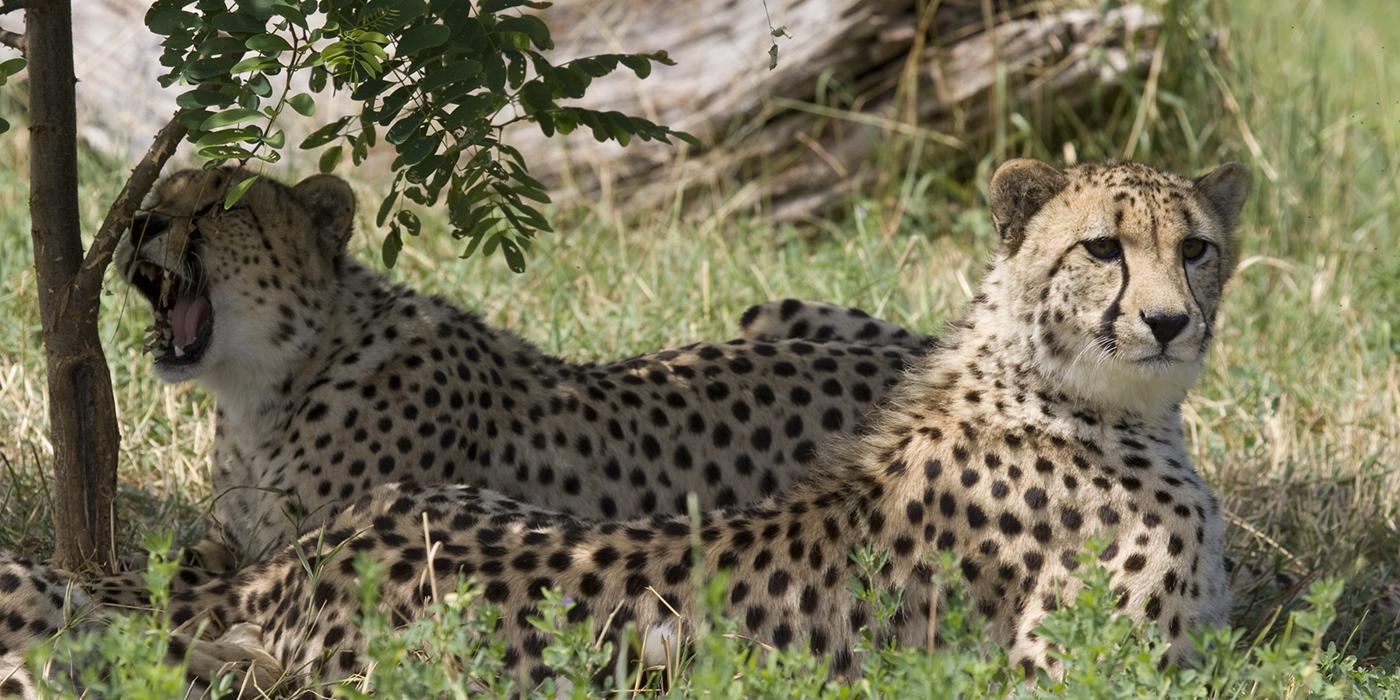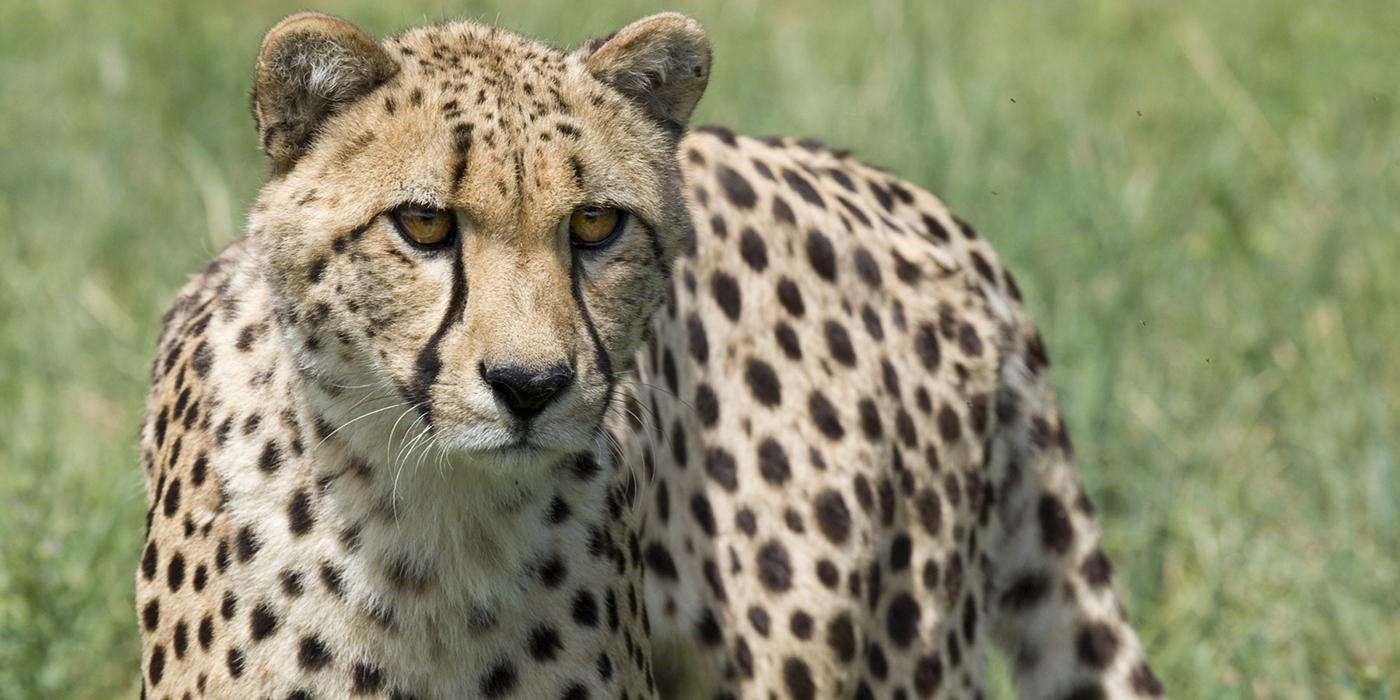Smithsonian Cheetah Science Q&A
As their native habitat continues to shrink, wild cheetahs are facing a drought of genetic diversity. This is in direct contrast with the population of cheetahs in zoos, which is as genetically diverse as it was 30 years ago because of cooperative and strategically managed breeding programs. The findings were the result of a new study from the Smithsonian Conservation Biology Institute (SCBI) and partners published June 21 in the journalsBiological Conservation. SCBI cheetah biologist Adrienne Crosier and Kim Terrell, lead author on the study, former SCBI doctoral student and current director of research and conservation at the Memphis Zoo, talk about what their findings mean for the future of cheetahs.
Want science delivered straight to your inbox? Sign up for the Zoo’s e-newsletters.
How did you collect DNA samples from the cheetahs?
The DNA was extracted from blood samples that were collected during routine physical exams over the past 30 years and stored in an ultralow freezer at -80°C, equivalent to a chilly -112°F.
What were you surprised to find?
For several decades we've known that all cheetahs on earth are genetically similar to each other because they are descended from just a few individuals after the species nearly became extinct about 10,000 years ago. However, we were surprised to find that wild cheetahs are continuing to lose what little genetic diversity they have. This loss is likely due to human encroachment on cheetah habitat. As wild cheetah populations become smaller, fragmented and more isolated from each other, inbreeding is more likely to occur. In other cat species, like the Florida panther, the loss of genetic diversity is usually accompanied by a loss of sperm quality, but we didn't see that here. We were surprised to discover that sperm quality was similar between wild and captive cheetahs, despite the difference in genetic diversity between these groups.
Did related males have equally poor-quality sperm?
While we didn't focus on this specifically, there were several groups of brothers represented in our dataset. Sometimes sperm quality is similar among brothers, and sometimes it's not. Sperm quality is certainly inherited to some extent, but further research is needed to fully understand the genetic basis of sperm quality. It's important to remember that even fathers and sons only share half their genes on average, and females can carry genes that affect sperm quality too.
Why would you cryopreserve cheetah sperm?
Sperm quality and other traits that are important for survival or reproduction are determined, at least in part, by the genetic makeup of each cheetah. These genes are passed on through sperm and eggs.
Having genetic material frozen from as many cheetahs as possible allows the opportunity to save the diversity that is left for the future. By freezing sperm carrying 'good genes,' we can ensure that these beneficial traits are never lost from the population. The sperm is maintained in a state of suspended animation and can be thawed someday to produce a cheetah cub with those beneficial genes.
How is the Smithsonian Conservation Biology Institute helping cheetahs?
The primary focus of our cheetah research program is to study cheetah reproduction. We do this in a number of ways.
By studying hormones, we were able to determine that male cheetahs go through puberty when they are between 18 and 24 months old. Females, on the other hand, mature between 24-30 months of age.
In 2015, we found that male cheetahs living in breeding facilities and with fewer caregivers have increased sperm quality compared with males that lived in zoo environments and with many caregivers. Single male cheetahs have lower quality sperm quality compared to coalitions (groups) of males living together. At SCBI, we have studied sperm metabolism as well as the effects of freezing and thawing sperm for cryopreservation. Ultimately, what we've learned will enable us to bank valuable genes for future generations should we need to step in with assisted reproduction.
The time at which a female breeds is also crucial to her ability to reproduce successfully. Older female cheetahs—9 years of age and older—tend to have infertility issues, especially if they have not had cubs previously. We've looked closely at oocyte (egg) quality, embryo development, and hormones in female cheetahs of various ages. What we discovered was that older females produce fewer eggs, but the quality and ability to form embryos is comparable to that of younger females. However, females as young as 6 years old that have not reproduced can develop uterine pathogens; the best way for us to avoid this is for the Species Survival Plan to ensure they have an opportunity to reproduce from a younger age.
How has the Smithsonian’s research helped inform institutions that want to breed cheetahs?
In the past, breeding centers were investing time and resources to try to breed older, non-reproductive females. Our studies have shown that if a female has not bred or given birth by age 8, it is unlikely that she will be able to become pregnant. Now that we have evidence to show they are non-reproductive, we can focus our efforts on breeding 4 and 5-year-old females, when we are most likely to have successful births. Those young moms also have a greater chance of birthing and raising cubs in the future, too, so it's a win-win!
Another significant change that came out of previous SCBI studies is that the Species Survival Plan does not recommend or support separating male cheetahs from their coalition mates unless absolutely necessary for management. We encourage facilities to always house brothers together and to try and make coalitions with unrelated single males when they demonstrate affiliative behavior.
And, since the number of animal care staff seems to affect a cheetah's sperm, we recommend that zoos limit the number of keepers working with the cats if they seem sensitive to humans.
Additional authors on this paper are Dave Wildt and Warren Johnson at SCBI, Stephen O'Brien at St. Petersburg State University and Nova Southeastern University, Nicola Anthony at the University of New Orleans and Laurie Marker at the Cheetah Conservation Fund in Namibia.
Related Species:








